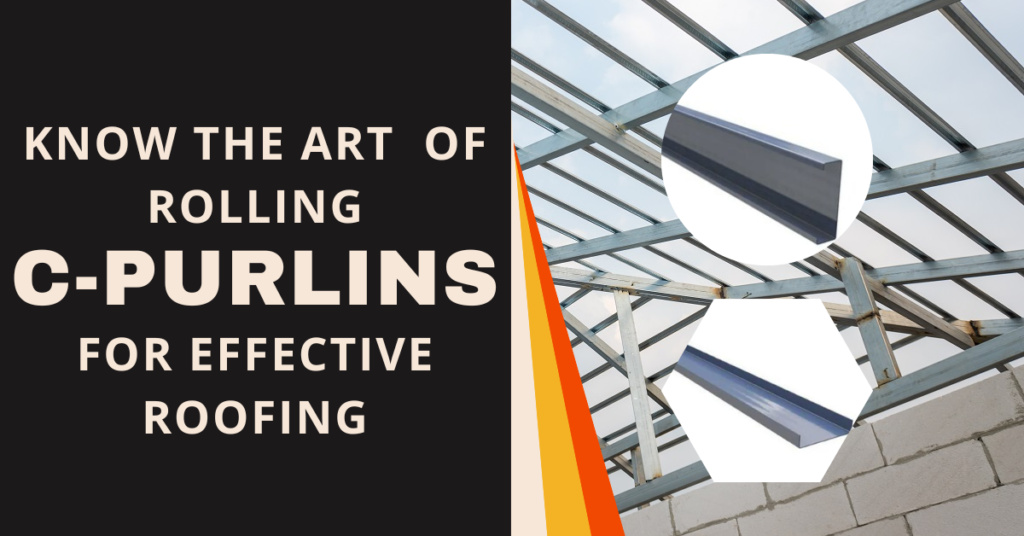Choosing suitable materials from the right roofing sheet manufacturers in Chennai and construction techniques is essential to ensure durability, stability, and cost-effectiveness. C-purlins are a crucial component in roofing systems, and understanding the art of rolling them can significantly impact the overall quality of your roof. This blog explores how to roll them effectively to create a robust roofing structure that stands the test of time.
The Art Of Rolling C-Purlins:
Material Selection:
Selecting the suitable material for your C-purlins is crucial. The most common material is steel due to its strength and durability. It’s essential to choose the appropriate gauge and quality of steel, depending on the specific requirements of your project.
Profile Design:
The design of the C-purlin profile is essential for its functionality. The purlin’s shape, size, and thickness must be carefully considered to meet the load-bearing requirements and the roofing design. Incorrectly sized or shaped C-purlins can lead to structural weaknesses in the roof.
Slitting:
Before rolling can commence, the flat steel strip is often slit into narrow strips of the desired width. Slitting is done using specialized machines that cut the steel into uniform strips, ensuring consistency in the final product.
Rolling Process:
Flattening:
The foremost step in the rolling process of C-purlins is the flat steel strips are sent into a set of rollers, which flattens them and prepares them for effective shaping.
Pre-Bending:
The steel strip is partially bent to form the C-shape in this step. The strip is passed through a series of rollers with increasing curvature.
Forming The C-shape:
The partially bent strip is then passed through additional rollers that continue to bend it into the desired C-shaped profile. The spacing and pressure of these rollers are carefully controlled to achieve the correct shape and dimensions.
Sizing & Trimming:
As the strip takes on its final C-shape, it may undergo sizing and trimming processes to ensure it meets the specified dimensions precisely.
Cutting To Length:
Once the C-purlin is formed and sized, it is cut to the required length. Precision cutting is crucial to ensure that the purlins fit the construction specifications accurately.
Quality Control:
Quality control measures are implemented throughout the rolling process to check for defects, accurate dimensions, and uniformity. Any irregularities are addressed before the C-purlins are deemed ready for use.
Surface Coating & Finishing:
After rolling, C-purlins may undergo surface treatment processes to protect them from corrosion. Common treatments include galvanization (coating with a layer of zinc) or painting.
Packaging & Shipping:
Once the C-purlins meet the quality standards and have been appropriately finished, they are typically bundled, packaged, and prepared for shipping to construction sites.
The rolling process is a critical step in ensuring the strength and integrity of C-purlins. Crayon Roofing, one of the best C purlin manufacturers, create high-quality C-purlins that provide reliable support for JSW colour coated sheets roofing and wall structures. Careful engineering and adherence to specifications are also necessary to meet the load-bearing requirements of the construction project.

